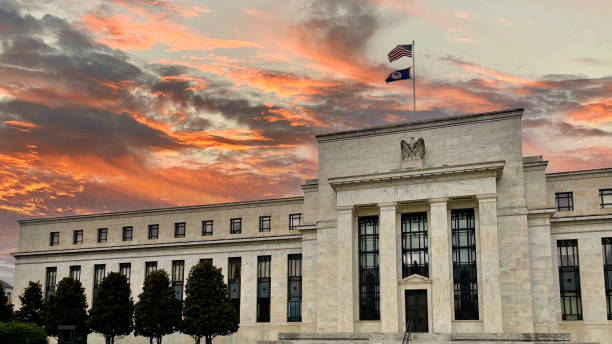
The fixed income landscape is undergoing a significant transformation, with recent developments prompting investors to reassess their positions in the Treasury market. The optimism that fueled a robust bond rally towards the end of 2023, driven by anticipations of early Federal Reserve rate cuts, is now being tempered by a mix of stronger-than-expected economic data and a cautious outlook from the Federal Reserve.
Shifting Dynamics in the Treasury Market
Investor sentiment in Treasuries was buoyed late last year by the prospect of the Federal Reserve reducing interest rates as early as the first quarter of this year. This enthusiasm propelled government bond prices to recover dramatically from their lowest levels in 16 years. However, the landscape began to shift following a robust U.S. jobs report and messages from the Fed, suggesting that premature rate cuts could reignite inflationary pressures. Consequently, yields on the benchmark 10-year Treasury have climbed, reflecting growing doubts about the timing and extent of potential rate reductions.
Investor Reassessments and Market Outlook
The recalibration of expectations regarding the Federal Reserve’s actions has introduced a new layer of complexity for market participants. Despite a continued belief in eventual rate cuts, the uncertainty over their timing and magnitude has heightened. This sentiment is further compounded by concerns over an anticipated increase in bond supply due to government issuance, which may dampen investor enthusiasm.
Robert Tipp of PGIM Fixed Income highlights the impact of recent job numbers and Federal Reserve communications, suggesting that the diverging potential outcomes have led to a reassessment of yield trajectories. Investors now entertain the possibility that 10-year yields could revisit last year’s highs, underscoring the changing tide in market sentiment.
Fed Policy Expectations and Market Reaction
Investor perceptions of the Federal Reserve’s policy path have been significantly influenced by Fed Chair Jerome Powell‘s recent remarks. Following the latest monetary policy meeting, Powell emphasized the necessity for greater assurance that inflation is on a downward trajectory before considering rate cuts. This stance was reiterated during his appearance on “60 Minutes,” leading to a notable adjustment in market expectations for rate adjustments.
Table: Shifts in Rate Cut Expectations
| Date | March Rate Cut Probability | May Rate Cut Probability | Total Expected Cuts in 2024 |
|---|---|---|---|
| Pre-Fed Meeting | 64% | 37% | 150 basis points |
| Post-Fed Remarks | 20% | 55% | 122 basis points |
This table encapsulates the evolution of market expectations regarding Federal Reserve rate cuts, highlighting the dynamic nature of investor sentiment in response to economic indicators and Federal Reserve communications.
Strategic Adjustments and Market Perspectives
Investors and fund managers are navigating this uncertain environment with caution. Vanguard’s John Madziyire reflects on the strategic approach to “buying the dip” in yields, adjusting expectations in light of the Fed’s recent policy signals. Similarly, Spencer Hakimian of Tolou Capital Management is shifting focus towards shorter-term Treasuries, anticipating that interest rates may remain elevated for an extended period.
Concerns over the impact of substantial U.S. government bond issuance are also influencing market dynamics. Nearly $2 trillion in expected new issuance is prompting expectations of higher yields to attract buyers, with fiscal worries and warnings from rating agencies adding to the cautious backdrop.
Equity Markets and Economic Indicators
Interestingly, the rise in Treasury yields has not mirrored its previous effects on the stock market. The S&P 500 has shown resilience, maintaining its upward trajectory. This divergence underscores the complex interplay between fixed income and equity markets, influenced by varying factors including economic data, fiscal policy, and investor sentiment.
Despite the prevailing uncertainties, many market participants maintain a longer-term perspective that anticipates a downward trend in rates, contingent on continued progress in controlling inflation. Fed officials’ projections of rate cuts align with this outlook, albeit with adjustments to the anticipated pace.
The U.S. Treasury market is at a crossroads, with investor strategies and expectations being recalibrated in response to evolving economic conditions and Federal Reserve signals. The intricate balance between acting on current data and anticipating future policy moves underscores the challenges and opportunities within the fixed income domain. As investors navigate through this period of uncertainty, the broader implications for markets and economic policy will continue to unfold, shaping the trajectory of interest rates and the financial landscape.
Featured image credit: Douglas Rissing via Getty Images
